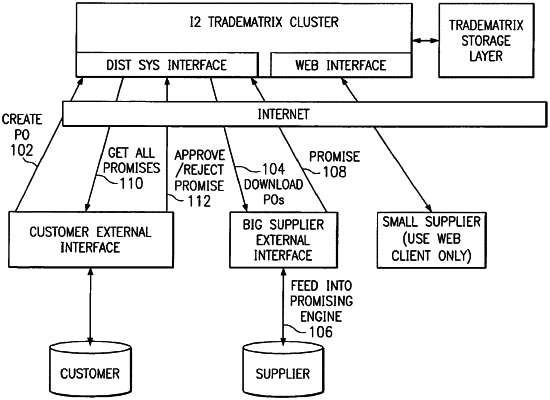| CPC G06Q 30/06 (2013.01) [G06Q 10/067 (2013.01); G06Q 10/103 (2013.01)] | 20 Claims |

|
1. A computer-implemented method for facilitating processing by a state machine of business objects, comprising:
creating at least one composite business object representing at least one collaboration between two or more business enterprises and including one or more components comprising component state information;
receiving, over a computer network from a system of one of the business enterprises, composite state information of the at least one composite business object;
generating two or more graphs represented in computer-readable media, each graph corresponding to a particular collaborating business entity of the two or more business enterprises;
determining, by the state machine in response to the receiving, a synchronization criteria that is required for synchronization between systems corresponding to the two or more business enterprises;
in response to the two or more business enterprises each having a system of record, synchronizing the systems corresponding to the two or more business enterprises according to the synchronization criteria; and
in response to at least one of the two or more business enterprises not having a system of record, not synchronizing the systems corresponding to the at least one business enterprise not having a system of record.
|